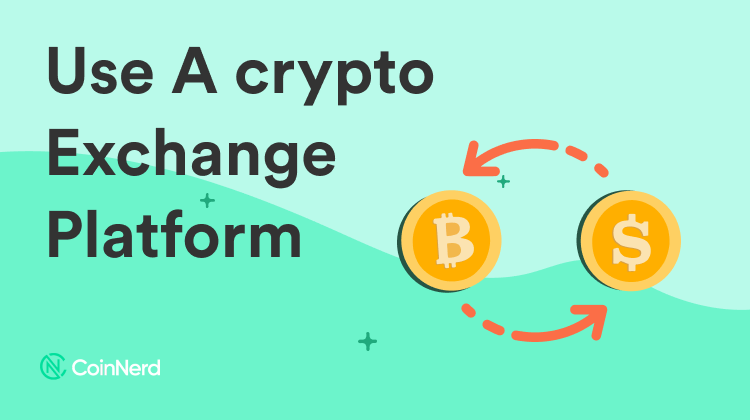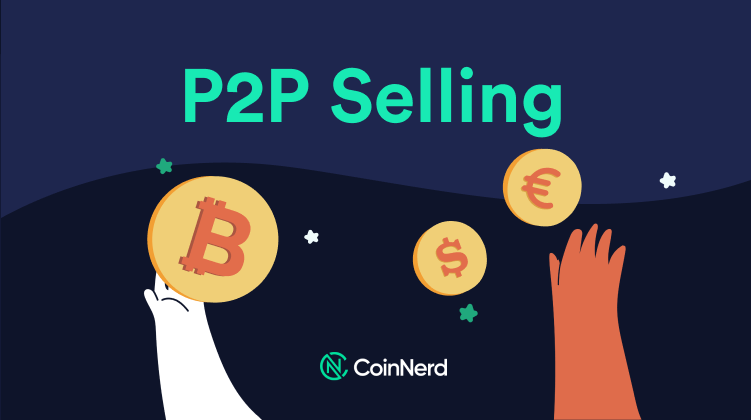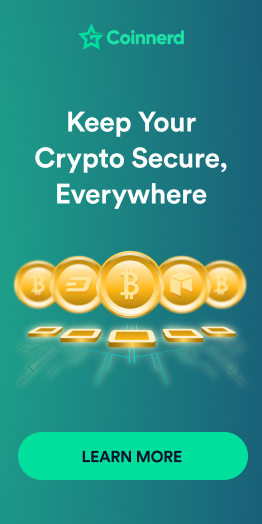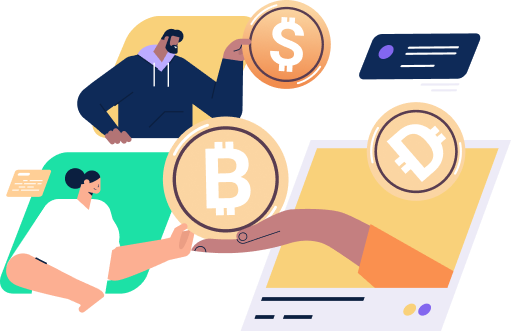How to Sell Your Bitcoin: Assessing The Different Methods
Do you want to know how to sell Bitcoin and cash out your hard work? We have collected information all over the net regarding the different ways you can sell your Bitcoin. With so many choices to choose from you should pick the method that suits you the best. So without further adieu let’s get started by learning what these methods are.
Choose Your Method
There are many methods of selling your hard-earned BTC on the market. Currently, there are 3 main methods of doing so and each of them has its own set of advantages and disadvantages. We will be giving you a brief overview of what each method does as well as why you should or shouldn’t use this said method.
Using an exchange service
Exchange services are businesses that are regulated and work with the traditional banking sector. This could be a simple website, a digital wallet, or even a full-service cryptocurrency exchange, which includes order books, market makers, and so forth.
Platforms for Bitcoin trading connect buyers and sellers. Market orders and limit orders can be used to buy and sell bitcoin, just like on a traditional stock exchange. To place a market order, the trader gives the exchange permission to buy or sell the coins at the current market price.
According to whether they’re buying or selling, traders who use limit orders instruct the exchange to trade coins at a price that’s lower than the current ask or higher than the current bid.
User registration and identity verification are prerequisites for making any bitcoin transactions on an exchange. To buy coins, a user must first transfer money into an account that has been opened for them after their authentication is successful.
Various methods of depositing funds, including bank wires, direct bank transfers, and credit or debit cards, are available at various exchanges. A trader can make money out of their account in a variety of ways, depending on the exchange.
These options include bank transfers, PayPal withdrawals, checks sent by mail, cash deliveries, bank wires, and credit card withdrawals and deposits.
Pros
- Effortless, simple, and time-saving
- Sells are guaranteed to be at or near market rates.
- Sells in any amount
Cons
- Verification of one’s identity is required.
- Some regions do not have access to this feature.
- Only bank accounts can receive payments.
Peer-to Peer-Transactions
It is what it sounds like, peer-to-peer transactions are a method where you are selling your BTC to another person. Peer-to-peer transactions can be done directly face to face or online using other platforms to your advantage.
Paying with cash, a payment app like PayPal, or settling the transaction with goods or services can all work as alternatives to the traditional banking system when selling peer-to-peer. There is no need to go through an intermediary when buying bitcoin from a friend or family member.
Alternatively, several platforms help sellers find buyers and vice versa by acting as a matchmaking service. Peer-to-peer trades are then negotiated between buyers and sellers.
Pros
- Bypass Exchange Services
- No trading fees
- Multiple payment options
Cons
- Not ideal for large BTC transactions
- You can get scammed
- Less convenient
Using Bitcoin ATMs
Automated teller machines (ATMs) that accept Bitcoin transactions are known as Bitcoin ATMs. It’s not surprising that Bitcoin has its ATM system, given that it is a digital currency in the first place. You will benefit from having access to a Bitcoin ATM as it becomes more widely accepted and integrated into society.
Known as Bitcoin ATMs (BTM), these machines are used to buy and sell bitcoins. You can buy Bitcoins using cash or a debit card at this kiosk. Using the BTM, you can also exchange Bitcoins for cash. The BTM is not the same as a traditional ATM, even though it works in the same way.
You can buy and sell Bitcoins with cash or a debit card at a BTM because they are connected to the internet. Internet access allows the BTM to connect the customer directly to a Bitcoin exchange or wallet, rather than to a banking institution.
Buying Bitcoins in person has never been easier thanks to this service. On the east coast of Australia, Singapore, and other countries that have legalized the use of these ATMs. BTMs can be found primarily in stores, restaurants, and airports.
Pros
- Convenient to use
- Very Secure
- Gives anonymity in transactions
- Smooth Transactions
Cons
- They aren’t available in every region
- Lengthy registration process
- Regulations vary from region to region
Using an Exchange Service
Despite their many drawbacks, Bitcoin exchanges are a one-stop-shop for trading. Some exchanges serve as intermediaries between buyers and sellers when selling cryptocurrency.
It is necessary to open an account with a cryptocurrency exchange platform before you can trade. Identity verification is a common requirement for many reputable exchanges. For cash withdrawals, a bank account must be linked.
However, you should be aware of any exchange restrictions imposed by your country. Some exchanges don’t allow people from certain countries to take part.
A simple sell order is all that is required once you have a trading account and have transferred Bitcoin to that exchange (or if you already have an account and have Bitcoin held in it).
You simply state the type of currency you want to trade and the amount of Bitcoin you want to trade. Once someone accepts your offer, the transaction will be completed. Cryptocurrency trading, on the other hand, can be much more complicated than the above description suggests.
You’ll need to withdraw the funds to your linked bank account once they’ve been credited to your account. This can take a long time, especially if the exchange is having problems with its banks or running out of liquid funds.
You should also be aware of any withdrawal fees that may apply to the platform of your choice. Some exchange platforms also have a cap on the amount of money you can withdraw at once.
If you continue to use a specific platform or upload additional documentation to meet Know Your Customer (KYC) and Anti-Money Laundering (AML) verification requirements, your limit may go up over time if you do so consistently.
Even though exchanges offer wallet services, they are by no means a safe and reliable place to keep your money. If an exchange is hacked or its owners mismanage or run away with users’ money, the exchange can shut down and users’ money can be lost.
If you want to get rid of your Bitcoins quickly, you can sell them into a stablecoin on an exchange and then transfer the funds to your wallet. Keeping your money on the exchange is an option, but it has its own set of advantages and disadvantages.
You should take full responsibility for your funds and store any amount that isn’t immediately needed in a safe offline wallet. A personal wallet outside of the platform gives you greater control over your funds.
When a digital asset is linked to the value of an underlying asset, such as fiat currency like the US dollar, the term “stablecoin” is used. You can exchange your BTC for a variety of stablecoins.
You can also use a cryptocurrency exchange to sell your BTC by spending it on one of the many crypto-focused payment cards that are available. It is possible to use a variety of cards in this manner.
Users’ assets are typically converted to cash at the point of sale, allowing the cards to be used anywhere that accepts traditional credit or debit cards for payment. Users can also use a crypto-friendly card to load stablecoins and avoid the volatility that comes with cryptocurrencies.

Peer-to-Peer Transactions
As mentioned previously, there are two ways to do this. You either do it face to face or use online applications to handle your transactions.
IRL Transactions
Selling Bitcoin P2P at a physical location is also a viable method of selling the cryptocurrency. Bitcoin can be sold in person via some online platforms, but parties can also meet up with friends or family and exchange Bitcoin for cash.
To sell Bitcoin in person, you must know how to send Bitcoin and work with a crypto wallet, or the platform where you keep your money. It’s critical to know the current value of Bitcoin before making a physical purchase.
Rates from well-known exchanges are commonly used by traders. To get an idea of the current value of Bitcoin, services like Cointelegraph’s Bitcoin Price Index, Coinbase Price Index, Coingecko Price Index can be used.
Physical locations or shops where participants can exchange Bitcoin for physical currency or exchange Bitcoin for physical currency exist in some regions of the world.
Although Bitcoin can trade at different prices on different exchanges and in different regions around the world, it is important to keep in mind that these prices can fluctuate.
It’s known as a “premium” because of this discrepancy. An asset’s price premium is the difference between its value and the value of the underlying asset or market.
The “Kimchi premium” is a term coined to describe the higher prices that Bitcoin frequently trades at in South Korea.
You should exercise caution when organizing an in-person Bitcoin sale with a stranger, whether through a platform or not. As with any in-person financial transaction, there are risks associated with trading Bitcoin with strangers.

Online Transactions
Online P2P Bitcoin transactions can be made easier with the help of specialized platforms and even products from reputable cryptocurrency exchanges. To put it another way, these services essentially allow users to exchange Bitcoin for fiat currency, or vice versa, over the internet.
Bitcoin buyers typically list their desired price and preferred payment method on these platforms. Once they’ve found listings they’re interested in, buyers simply follow the on-screen instructions to complete the transaction.
Escrow functions are commonly used on these platforms to ensure asset transfer and protect both parties. For example, a wire transfer or an agreement to receive funds on one of several well-known traditional payment platforms are all possibilities for a seller of Bitcoin who chooses to accept one of these payment options.
Using Bitcoin ATMs
Bitcoin ATMs may resemble conventional ATMs, but they are not. There is no direct connection between the Bitcoin network and users’ financial institutions.
Using a Bitcoin ATM is as simple as scanning a QR code from your wallet and receiving cash in return. A simple internet search will reveal the locations of Bitcoin ATMs all over the world.
When compared to other payment methods, they typically charge a higher transaction fee for using these services. If you’re looking for a Bitcoin ATM to sell BTC at, it’s important to keep in mind that not all Bitcoin ATMs are capable of both buying and selling BTC.
The process of registering for a Bitcoin ATM account can take a lot of time, energy, and effort, which is why some providers require users to have an existing account before they can conduct selling operations.
For example, a phone number for activation and notifications, a government-issued ID, a palm scan, and a current photo taken by the ATM’s camera may be required for new users. An identity verification process varies from machine to machine and operator to operator, but it is always necessary to sell Bitcoin.
The AML and KYC requirements in the jurisdiction where the ATMs are located must also be taken into consideration by BTC ATM operators. In some countries, a money transmitter license is required, while in other countries, current regulations prohibit the installation of Bitcoin ATMs.
The wallet address to which you need to send your Bitcoin is given to you in the form of a QR code. In some machines, you’ll get cash right away, while in others, you’ll be given a redemption code and required to wait for the transaction to be confirmed on the Bitcoin blockchain.
Although one confirmation is usually sufficient, it is possible to need up to six confirmations before you can withdraw money.
Conclusion
To conclude, there are numerous ways to sell your BTC online and all of them have their own set of pros and cons. It’s up to you to decide which method works for you. We hope that you like our article. Our researchers have spent days gathering this information and compiling them into this one useful resource.
* We hope this information will help you in your investment process, but this is not investment advice. Every investment carries risk, especially in this industry, so DYOR before making a decision.






